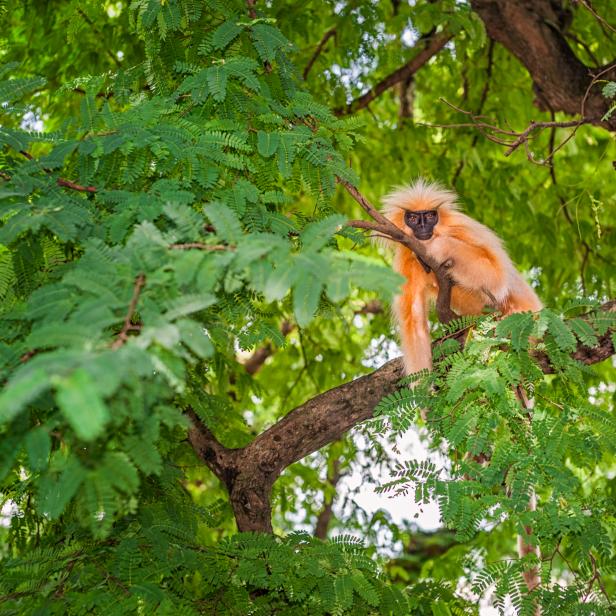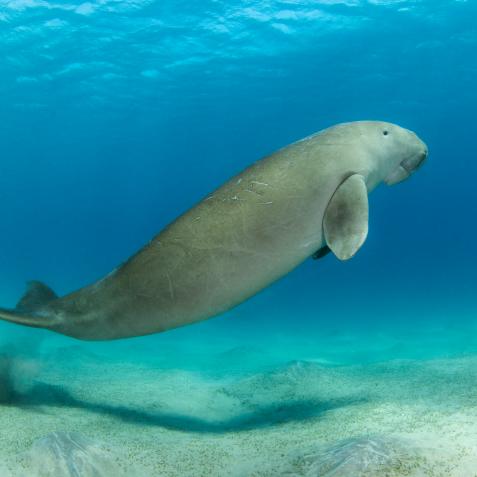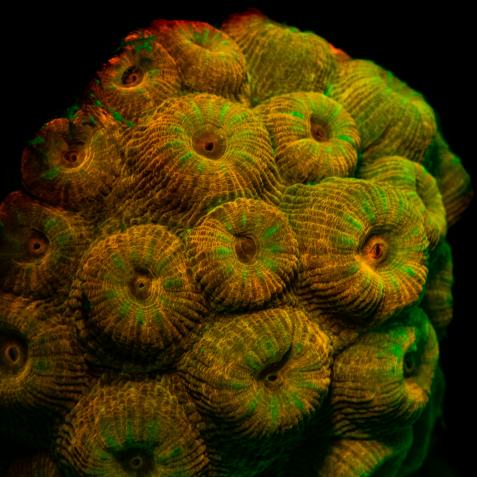
GettyImages/Danielrao
How Endangered Monkeys Swing Over Traffic Jams in India
Monkeys get to where the trees are greener on the other side
Driving down a highway that cuts through forests, anywhere in the world, it’s hard to miss the signs with cartoon-like animals on them. ‘Beware of Kangaroos’ signs in Australia or ‘Reindeer Crossing’ boards in Finland make you wish you would come across one of these animals in real life on the drive. But the fact is that if you do see one, and see one crossing the road, chances are you or somebody else will hit it and the result will likely be traumatic to both.
Roads and railway lines or “linear infrastructures” are considered among the largest threats to biodiversity worldwide, including habitat loss and fragmentation. They have been known to work as physical and behavior barriers, as they divide wildlife habitat into two or more fragments, creating isolated populations of wildlife. This reduces chances to mate, potentially decreases the strength of genetic pools, loss of access to a variety of food - and of course, there is the direct impact of mortality through collisions. In the United States alone, there are 21 threatened and endangered species whose survival is threatened by roads - including the key deer, bighorn sheep, and red-bellied turtles.
Around the world a number of solutions have been proposed to deal with these barriers. Fences are a common proposal, but ideally animals need to roam across their historical habitats and routes - and fences could act like additional barriers. Among the most lauded solutions though have been ‘wildlife bridges or tunnels’’ that were first conceptualized in the 1950s and have been showing up around the world in the last two decades. From helping pumas in Brazil to water voles in England, these bridges have largely been seen as successful engineering to help wildlife conservation.
But bridges as flyovers don’t work in all contexts. For example, how do you get a monkey that almost never comes down to the ground to use a bridge? In the western part of India’s northeastern state of Assam, an almost mythical animal called the golden langur was struggling with a state highway across prime habitat. The Gee's golden langur (Trachypithecus geei) is an Old World monkey with a coat that ranges from pale yellow to vibrant golden with the seasons, with hues of brown or rust on its chest and flanks, a black face, and a long and elegant tail that helps it balance. It is arboreal, like several other monkeys and apes, which means it rarely, if ever, comes down to the ground - even during the monsoon. It eats fruits, leaves, seeds, and flowers and even brings up its young in the canopy. It is one of the most endangered primates in India, where less than 1,500 animals live in the wild, almost entirely in sanctuaries as well as rubber plantations in Assam.

GettyImages/Udayan Borthakur
“We first heard about this arboreal species coming down to the ground in the fringes of Chakrasilla Wildlife Sanctuary of Assam around a decade ago,” said Dr Bhaskar Choudhury of the International Fund for Animal Welfare – Wildlife Trust of India (IFAW-WTI), a wildlife conservation group that works in the region. “We knew of at least 10 cases of mortalities, but who knows how many cases went undetected, or how many other individuals were lost to other causes due to this fragmentation.”
The main problem was the highway cuts clean across the forest – contributing to the already steady decline in contiguous canopy that the monkeys needed to survive. ”We decided to build a ‘canopy bridge’ for individuals to get safely to sources of food and water on either side,” he said. “They were made of short wood and bamboo poles (30-40 inch long) connected with GI wires as an experiment to see whether the langurs use it or not.”
The team consisted of wildlife experts from IFAW-WTI, the local forest department as well as youths from local communities and tribes that live in the area. “To monitor usage of the bridge, we had put camera traps and engaged locals to participate in watching the bridge and checking the traps. When we received photo evidence of one adult male and a few sub adults using the canopy bridge after a few months, it was our first sign of success. We continued to monitor incidences of road hits on the vulnerable stretch of the road as well, and found that the number came down to zero recorded deaths in the first year.”
The communities around the area are mostly the indigenous Garo tribes who have accepted the langurs as extended family and never harm them. They were a crucial part of the project and continue to extend their full support. “But the bamboo and wooden canopy bridge required repair at least once a year, so the solution was not totally long term – so what we did simultaneously was to physically tie parts of foliage together between the two sides of the highway so as to reestablish the natural canopy,” said Dr Choudhury. “Today we have finally removed the artificial ones because a natural canopy has formed again, and there is no better solution than allowing nature to provide on its own.”
The state government also conducted a planting drive in the area this year and planted guava, mango, blackberry and other fruit trees to serve as habitat for golden langurs - the only way the species can have a fighting chance.












































































